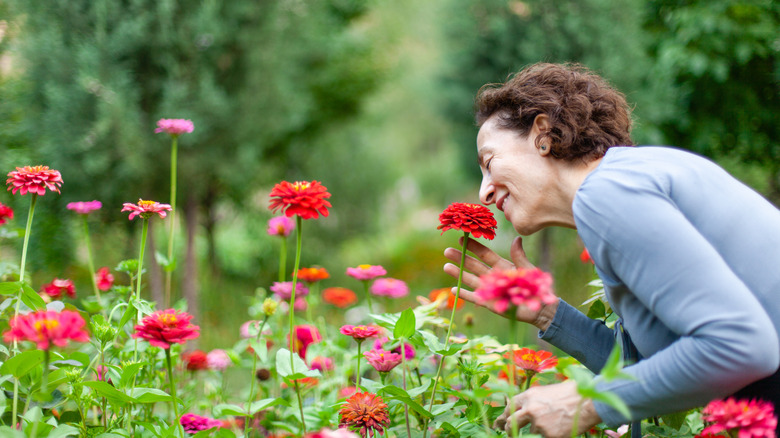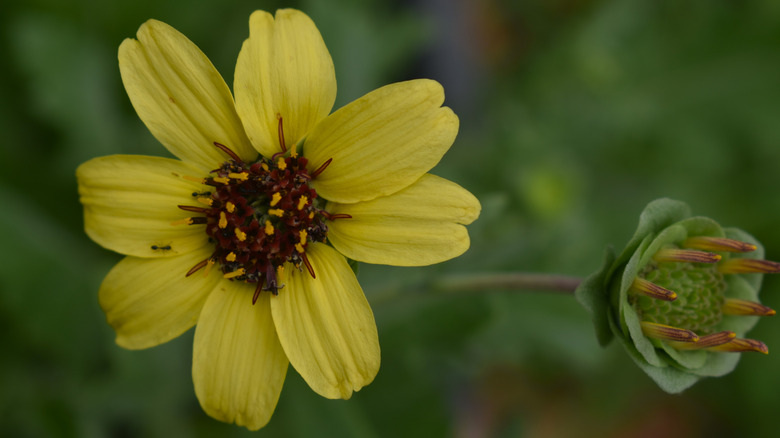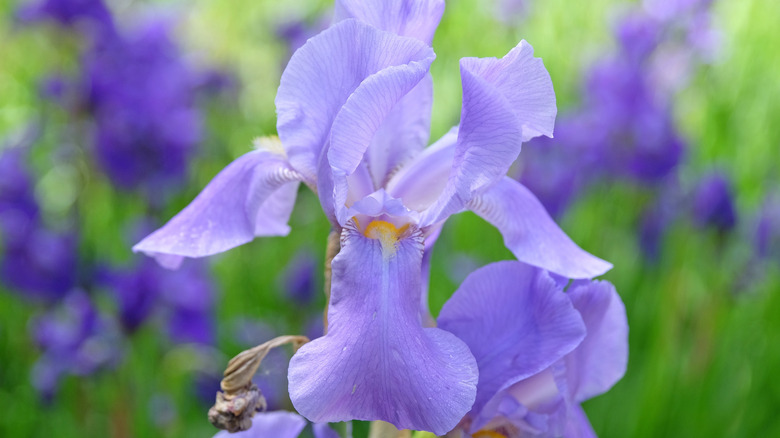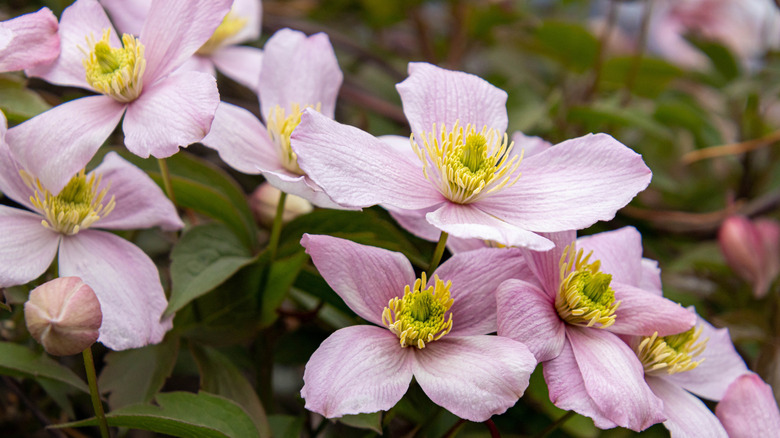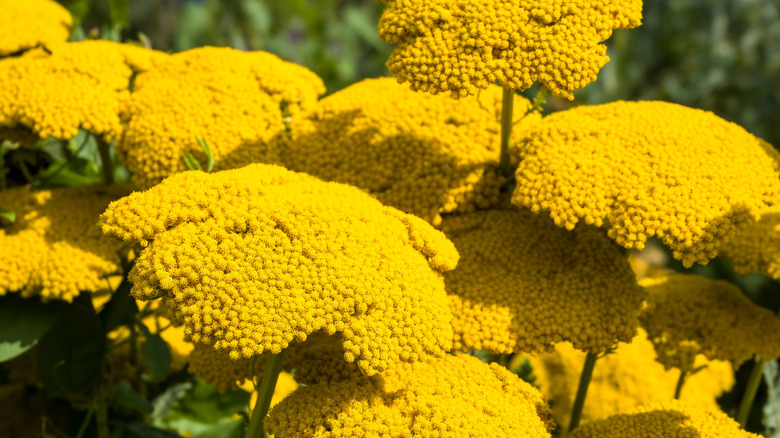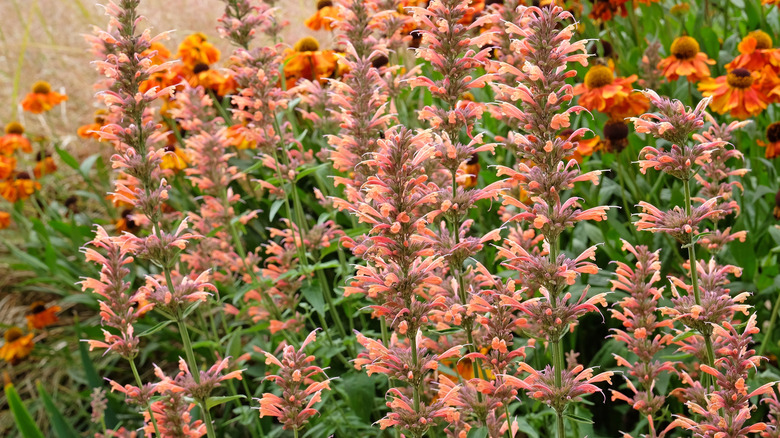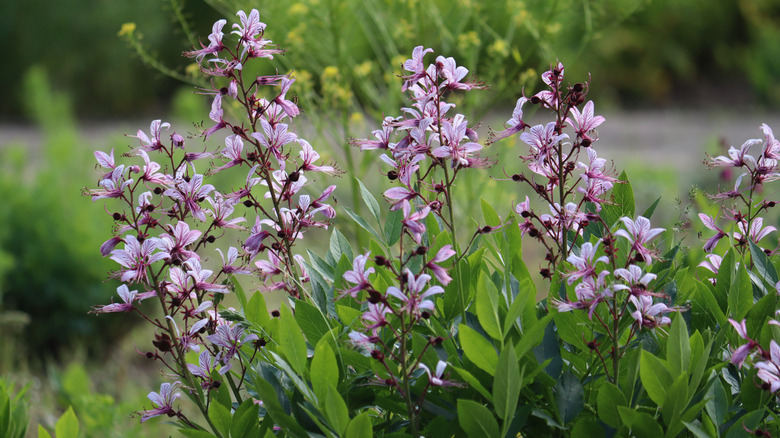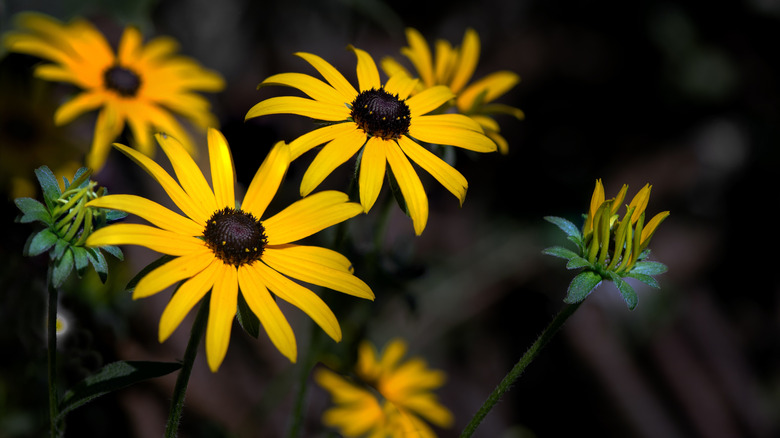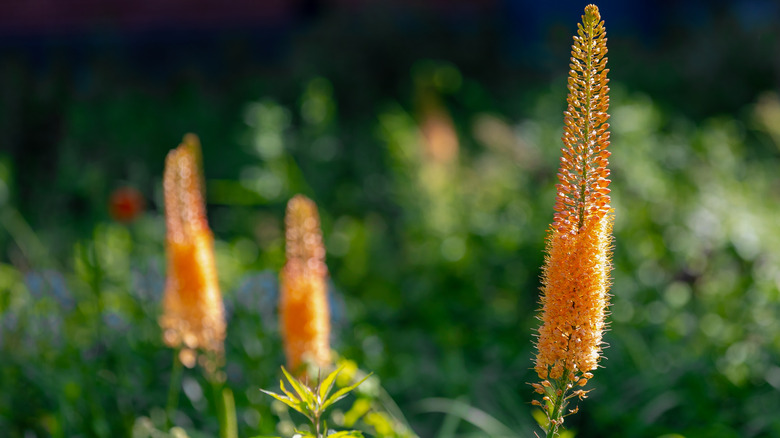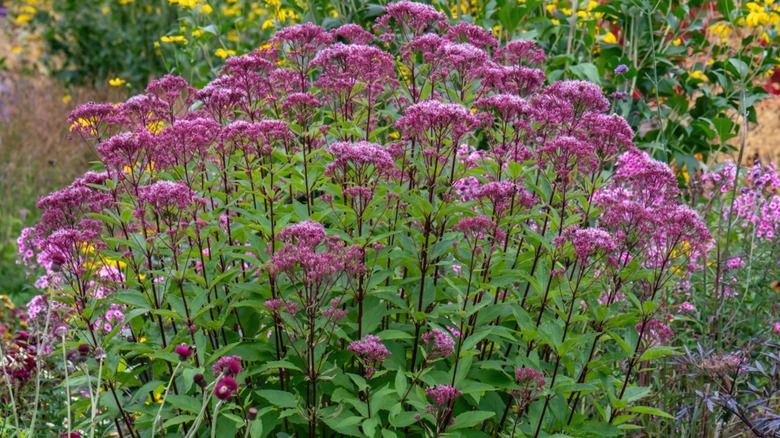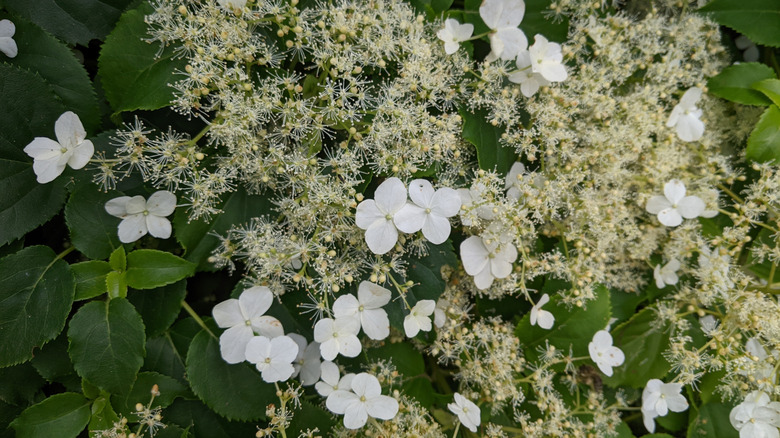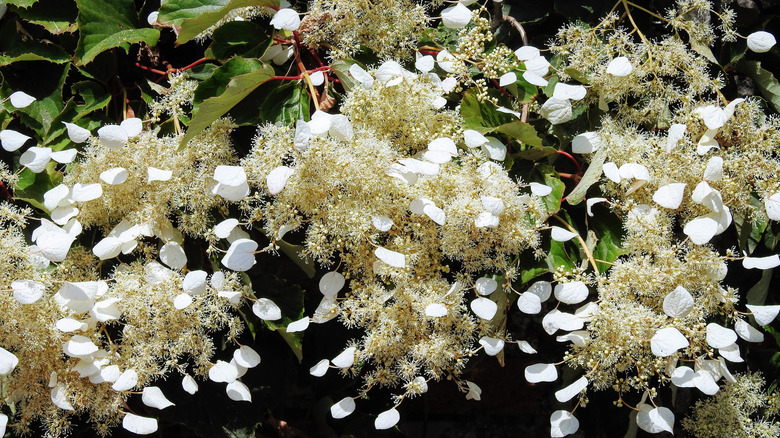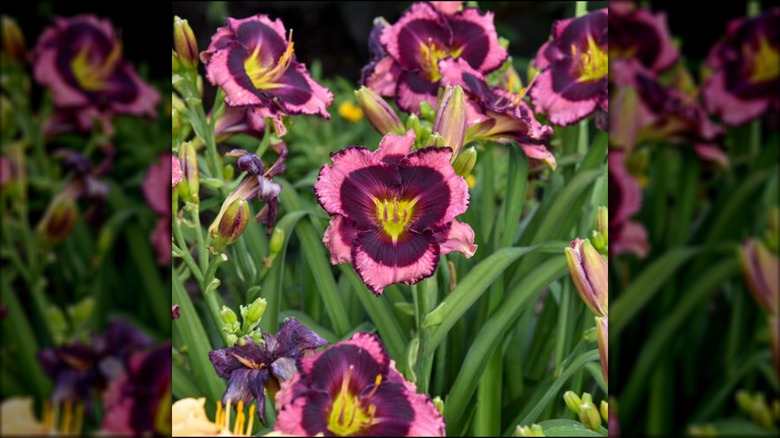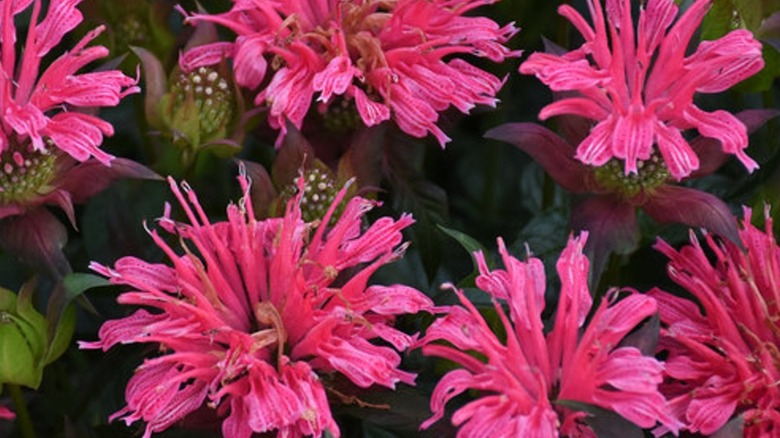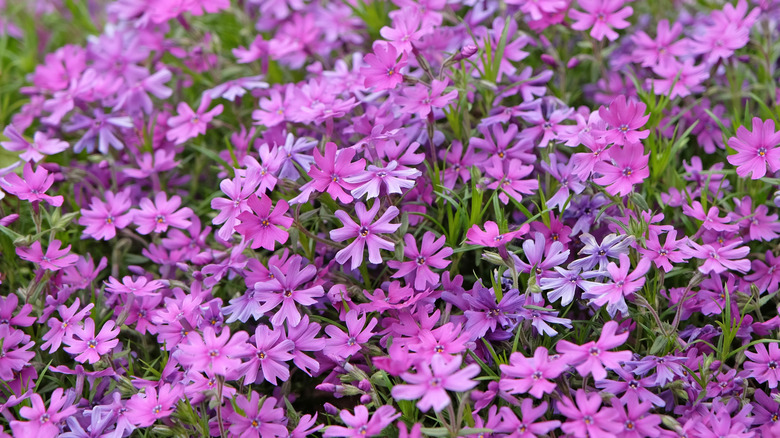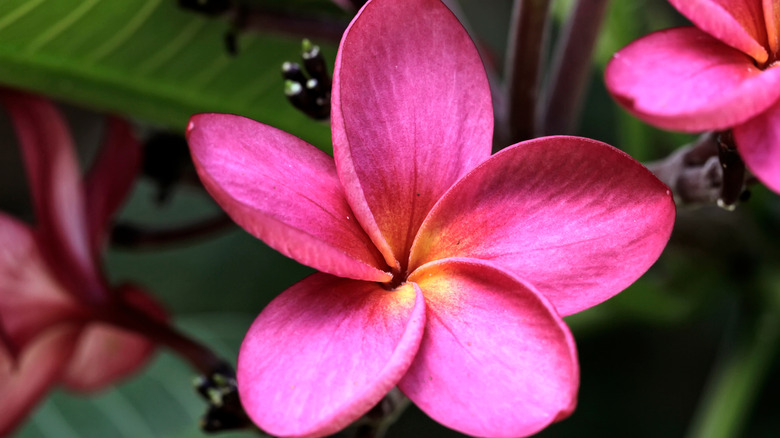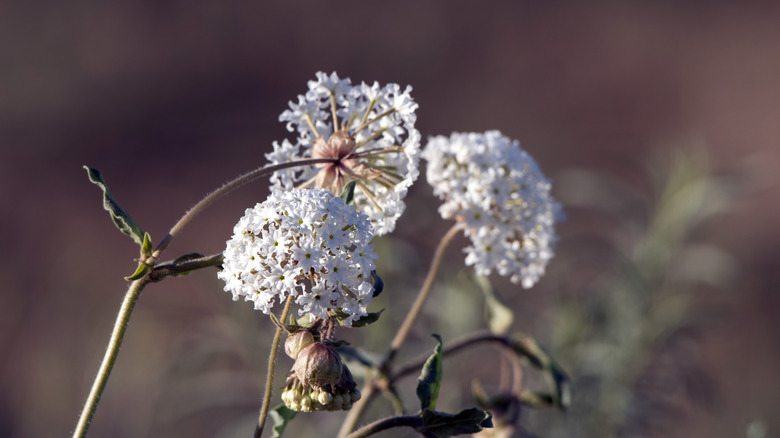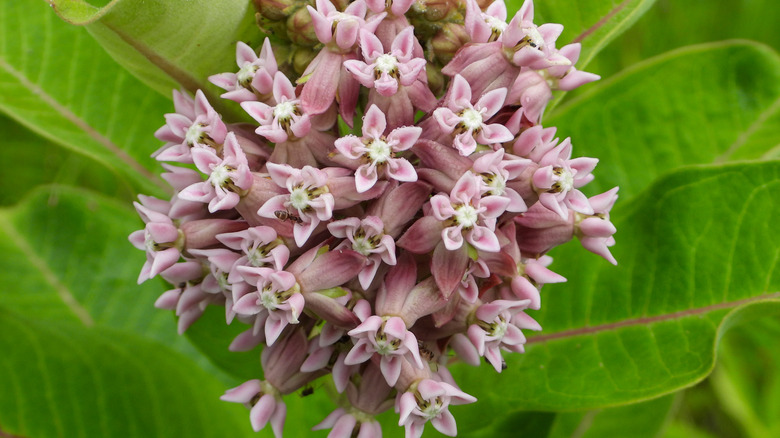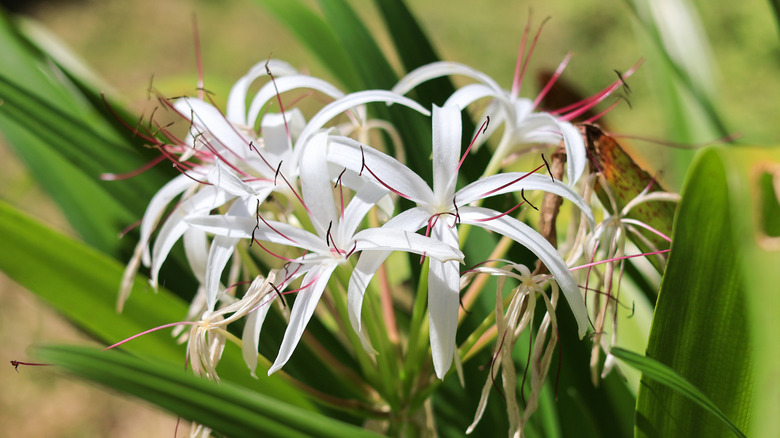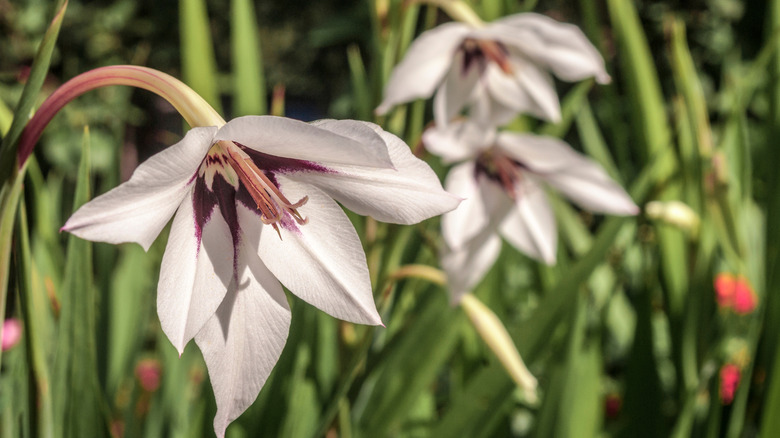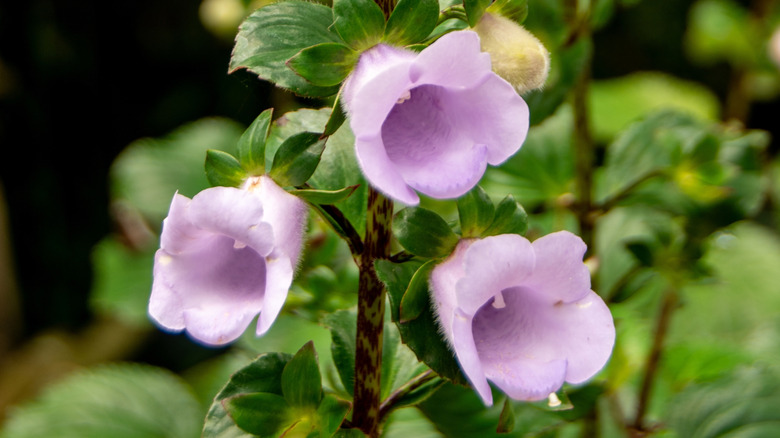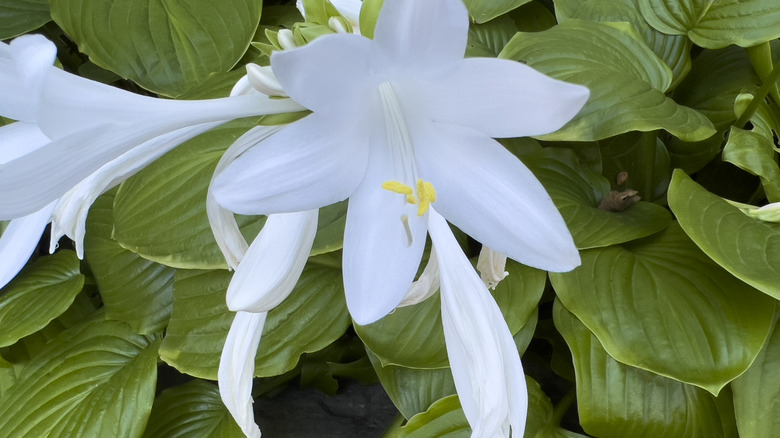23 Fragrant Perennial Flowers That'll Make Your Garden Smell Amazing All Summer Long
Although roses remain favorites for suffusing your summer garden with intoxicating fragrance, there's only so much of their sassiness a gardener can tolerate. Luckily, there are a myriad of summer-blooming perennials that, apart from enhancing the visual appeal, emit pleasant fragrances without requiring as much care and maintenance. Think yellow coneflower, desert candle, bee balm, Stephan jasmine, and tuberose.
Not only that, but plenty of these summer bloomers offer diverse aroma profiles. For instance, chocolate daisy emits a chocolatey fragrance, while fernleaf yarrow has a spicy scent. In contrast, Dalmatian iris, mountain clematis, and fragrant sand-verbena carry undertones of vanilla. As you can see, there are various options to appease your and your guests' noses. Before planting, keep to the maxim "right plant, right place," which means ensuring the chosen perennial's cultural requirements and growth range match your site's conditions. With this in mind, let's discover the top 23 fragrant perennials that will make your garden smell oh-so-delicious in summer.
Chocolate daisy
Chocolate daisy or lyreleaf greeneyes (Berlandiera lyrata) is a stunning flower you should plant for a chocolate-scented garden. Around late spring, this low-growing perennial bursts out with maroon-eyed, yellow ray petals in the night, which infuse the air with a chocolaty aroma until they fold from the day's heat. This flower bonanza lasts through fall or year-round if you live in a frost-free area. Mass plant in dry, sunny sites to benefit from their heat and drought tolerance. Or, sit around the edges where deer walk down for a nibble. Chocolate daisies are hardy in zones 4 to 10.
Dalmatian iris
The lavender-blue flowers of Dalmatian iris (Iris pallida) will infuse the early summer air with an aroma that's a pleasant blend of vanilla, grape jelly, and orange. Once the flowers are exhausted, your garden will remain ornamental thanks to the bunch of variegated, upright leaves. However, you'll need to stake them if you live in a windy area. Dalmatian, or sweet, iris will make a stunning addition to partially shaded, sunny sites in zones 4 through 9. If you're looking at cultivars, select gold-foliaged varieties, as they grow vigorously.
'Fair Rosamond' clematis
Hybridized to produce massive blooms, 'Fair Rosamond' clematis (Clematis 'Fair Rosamund') makes a remarkable sight with its pink-blushed, white petals that wrap around purple stamens. Although gardeners debate their smell, with some calling them more reminiscent of roses rather than violets, they're delightful, albeit not heavily pronounced throughout the day. After 'Fair Rosamond' has bloomed in early summer, prune it to encourage a second flush toward the season's end. Be sure to give them ample support, as the perennial vines can grow 14 feet tall. It's hardy in USDA zones 4 through 9.
Mountain clematis
If you've got alkaline, fertile soils and fall in zones 6 to 9, have a look at mountain clematis (Clematis montana). This fragrant vine becomes swathed in star-shaped flowers, in pink, red, white, or purple hues, in late spring that carry forward into the summer. You may also train it over a patio trellis to bask in its vanilla fragrance and enjoy the front view of hummingbirds and butterflies feverishly sipping from their blooms. Wear gloves before handling the plant to prevent contact dermatitis. Keep pets and children away from the vines, as they're highly poisonous if consumed.
Fernleaf yarrow
Fernleaf yarrow (Achillea filipendulina) is another fragrant, summer-blooming perennial perfect for a colorful garden. In bloom, you'll notice golden heads dancing above a sea of fern-like foliage that imbues the ambient air with a spicy aroma. Be sure to trim the spent bush after the first flush to the basal foliage to encourage repeat blooms in the fall. Avoid growing fernleaf yarrow in windy areas or moist, fertile soils, or they'll require staking. Instead, position them in a dry, sunny site in zones 3 to 9 since they're heat- and drought-resistant. Poor soils pose little problem, provided they drain well.
Hummingbird mint
Consider planting hummingbird mint to tantalize your senses all year round. Even when the plants have long died back in the winter, they'll continue to emit a pleasant fragrance, evocative of root beer. As for flowers, you'll see them throughout summer — with frequent deadheading — often surrounded by hummingbirds. Botanically called Agastache, hummingbird mint or giant hyssop can be successfully grown in zones 5 to 10. Cultivars like 'Acapulco Orange' and 'Blue Fortune' will be more resilient in the southeast US. As good drainage is important, prefer growing them in raised beds.
Dittany
Dittany (Dictamnus albus), hardy in zones 3 to 9, sprouts leathery green leaves that release a lemony aroma when they scrape against each other. Toward the end of the spring, their stems are topped by fragrant, white or pink flowers that continually bloom into early summer, drawing in many butterflies. However, they aren't the easiest plants to grow. While seed propagation is recommended, their seeds must be cold-stratified and take about four years to produce blooms. Division is also untenable because they're prone to transplant shock. But as these deer-resistant plants can be long-lived, they're worth a shot in perennial borders.
Yellow coneflower
Yellow coneflower (Echinacea paradoxa) is a stunning variety of coneflower you could be growing in your garden for summer fragrance. At the beginning of the season, this perennial explodes with masses of yellow ray flowers, luring in butterflies and bees with the promise of sweet nectar. Leave the dead flowers on so the plant may produce seeds, in turn attracting finches in the fall. As yellow coneflowers sprawl out, they're best planted in groups of three so they may naturally support each other. Their deep taproots allow for planting in dry, sunny sites in zones 3 through 9.
Desert candle
Desert candle (Eremurus spp.) or foxtail lily is a bulbous perennial that produces 8-foot-long flowering spikes in early summer, with fragrant blooms slowly unfolding bottom-up. The petals can be simultaneously in distinct hues of gold, orange, and pink, and get a lot of attention from hummingbirds and butterflies. Since their foliage withers away once they begin blooming, it's best to team desert candles with groundcovers similarly hardy to zones 5 through 8. In cool climates, plant desert candles in the spring to minimize damage from late-season frosts. Consistently moist, fertile soils and full sun are a must.
Joe Pye weed 'Gateway'
Joe Pye weed 'Gateway' (Eutrochium maculatum 'Gateway') is a summer-blooming plant that can flood your rain garden with abundance. This sun-loving perennial thrives in moist, alkaline soils. In July, it sends out vanilla-smelling, mauve flowers that receive lots of attention from honeybees and butterflies. After the blooms terminate in September, they're replaced by seeds that lend ornamental interest in the winter. 'Gateway' can grow about 6 feet tall and 2 feet wide, and is best propped in the back of the border or as a specimen. This deer-resistant plant grows successfully in zones 4 through 8.
Climbing hydrangea
If you have any free-standing structures like trellises, arbors, or pergolas in your garden, or you're considering decking any retaining or exterior walls with perennial vines, climbing hydrangea (Hydrangea anomala) is an excellent choice. It both twines upward and develops holdfasts for better climbing. During early summer, the vine fills out with creamy white or gold flowers, imparting the space with a sweet scent. Left to its devices, it's capable of growing over 30 feet tall and 5 feet wide. It adapts well to zones 4 to 8 in dappled or partially shaded sites holding rich, moist soils.
Japanese hydrangea vine 'Moonlight'
Another outstanding perennial option for filtered sun or deeply shaded sites is Japanese hydrangea vine 'Moonlight' (Hydrangea hydrangeoides 'Moonlight'). In early summer, the vine is swamped in highly aromatic, white flowers (they resemble lacecap hydrangeas). Even when not in bloom, the heart-shaped foliage looks tremendous, especially when it turns from silver-green to gold in the autumn. You may turn this vine into an espalier or guide it along walls or fences for privacy. Do note that it can take nearly seven years to produce blooms after transplantation. You may grow it in moist soils in zones 5 to 8.
Rainbow Rhythm 'Storm Shelter' daylily
Rainbow Rhythm 'Storm Shelter' daylily (Hemerocallis 'Storm Shelter') is perhaps an unmissable addition for any pollinator garden. With deeply saturated eggplant hues flowing out of their chartreuse centers, the fragrant, layered, mauve flowers make a beguiling sight that even butterflies and hummingbirds find irresistible. Better yet, in addition to midsummer blooms, they produce a second flush later in the growing season. These perennials are troopers against urban pollution, poor fertility, dry conditions, and road salt. They may grow about 2 feet high and similarly wide, and are great for zones 3 to 9.
'Pardon My Rose' bee balm
Where space is at a premium, consider growing 'Pardon My Rose' bee balm (Monarda didyma 'Pardon My Rose'). This compact plant grows about 18 inches tall and 28 inches wide. Still, its blooms rival a standard plant's size, typically measuring about 3 inches across, charming a bevy of winged pollinators from mid- to late summer. Their glossy green foliage smells like mint, which helps direct deer and rabbits away from your garden. It shows decent resistance to powdery mildew. Keep deadheading to minimize volunteer seedlings. This eastern U.S. native robustly grows in zones 4 to 8.
Creeping phlox
Creeping phlox (Phlox stolonifera) can carpet your ground with fragrant rosy-purple or violet-blue flowers from July to September. For the best performance, grow it in woodland settings in moist, slightly acidic soils. Partial shade is optimum, though it can tolerate full sun, provided the soil is kept consistently moist. Creeping phlox can tolerate some foot traffic and doesn't grow over 1 foot high, and so may be used to cover walkways. If you would like to attract more pollinators, mass these perennials in garden beds. Trim the foliage after flowering to prevent mildew. Creeping phlox can be grown in zones 5 to 8.
Stephan jasmine
Hailing from France, Stephan jasmine (Jasminum x stephanense) is for those who enjoy spending their evenings in their gardens. That's because the pleasant fragrance emanating from their pink blooms is more pronounced after sunset. As these perennial vines can climb up, you can prop them in patio containers or train them over a trellis. Allowing them to sprawl over moist, rich soils is also an option — they can extend about 4 feet wide. Stephan jasmine can be grown in sunny or lightly shaded gardens, present in the USDA range 7 to 10. However, winter protection may be necessary in colder ranges to prevent dieback.
Fragrant sand-verbena
In rock gardens and water-wise landscapes, fragrant sand-verbena (Abronia fragrans) can be an excellent option due to its distinctive drought tolerance and minimal water needs. From late spring through frost, vanilla-scented, pink-blushed, white flowers top their red-tinted, green foliage. These usually open during cool afternoons and close the next morning. To draw the attention of butterflies and other pollinators, plant these 3-foot-tall and similarly wide perennials in garden beds. Site them in partial shade, though full sun is tolerated. They typically remain problem-free and are suitable in zones 7 to 10.
Tuberose
Popularly cultivated as a cut flower and for its use in perfumery, tuberose (Agave amica) is another fragrant perennial you can grow around patios, decks, and walkways. Velvety white blooms tower above the fleshy, gray leaves in summer, sometimes lasting into the fall, and are pollinated by moths and hummingbirds. Grow them in sandy or loamy soil with full-to-part sun exposure. Tuberose can grow about 3 feet tall and similarly wide, and can be reliably grown in zones 8 to 10. You'll need to divide the plant every couple of years.
Common milkweed
Got some space to spare and would like to support the monarch butterflies? Grow common milkweed (Asclepias syriaca), but beware that it can naturalize in the area. Lavender, pink, or white flowers cover its foliage in the summer (typically until August) and are usually quite fragrant. Unpruned, the plant can grow about 5 feet tall in optimal conditions of full sun and well-draining soils in zones 3 to 9. Brushing past any plant part can irritate the skin, and accidental consumption can be toxic for humans and their furry friends. So, position them accordingly.
String lily
String lily (Crinum americanum) — also called crinum, Florida swamp, and southern swamp lily — is perfect for inundated or flooded sites that experience no more than 12-inch-high standing water. The pink-blushed, white lily flowers are in bloom from June to November and attract night moths with their heavenly fragrance. Grow them in acidic soils where they're exposed to full or part sun. String lilies can grow about 4 feet tall and half as wide in zones 8 to 11. Keep their beds mulched in winter. Choose their site carefully, as transplantation can delay their flowering by a couple of years.
Peacock gladiolus
With their flowering period lasting from August to September, peacock gladiolus (Gladiolus murielae) plants are sure to brighten your summer with their sweet-scented, purple-throated, white flowers. Peacock gladiolus has an elegant form, with the strappy leaves fanning out, much like iris plants. Alternatively called fragrant gladiolus, this perennial can grow about 3 feet high in sunny, well-draining sites. It's unfussy about soil texture, except for heavy clay, where it doesn't perform as well. Although not necessary if you live in zones 7 through 10, digging out the bulbs and overwintering them inside can enhance performance.
Canterbury bells
Owing to their tropical origin, Canterbury bells (Gloxinia perennis) have a narrow range of zones 9 and 10 as perennials and otherwise should be potted and overwintered inside. Around early summer, they explode into sprays of lavender or blue, cup-shaped flowers that last throughout the fall if you keep snipping off the spent blooms. What makes them an interesting addition is that they create perfume capsules that bees steal to attract mates. Canterbury bells show good tolerance for heat and humidity. You'll need to plant them in a moderately shaded site, preferably in moist, rich soils with sand or loam texture.
Plantain lily
Unlike newer hosta varieties, plantain lily (Hosta plantaginea) is very showy and fragrant, with its waxy white blooms growing over 4 inches wide. Plus, its petals unfold in the evening from August to September, bringing in butterflies and hummingbirds. Since it continues to sprout new leaves all summer long, it's a valuable addition in case late-season frosts or disease outbreaks spoil the spring foliage. Plantain lily is best grown in partial or dappled shade in southern ranges and full sun in cooler climates. Its adaptive range covers zones 3 to 9.
